Planning worship?
Check out our sister site, ZeteoSearch.org,
for 20+ additional resources related to your search.
- |
User Links
Person Results
‹ Return to hymnal
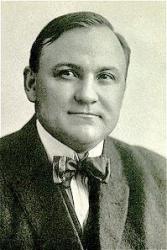
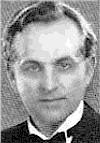
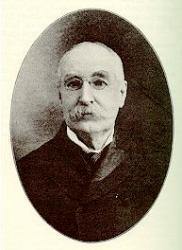
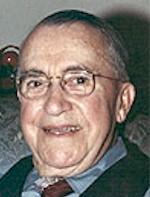
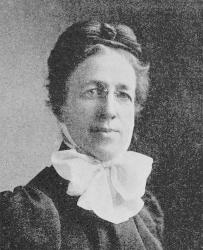
Export as CSV
Paul Rader

1879 - 1938 Person Name: P. R. Hymnal Number: 3 Author of "I've Found the Way" in Favorites Number 1 Rader was one of the most powerful evangelistic preachers of the early 20th Century. He described himself as an ex-bellboy, ex-cowboy, ex-prospector, ex-football player, and ex-pugilist.
He was pastor of Moody Church in Chicago, Illinois (1915–21), and followed founder Albert Simpson as president of the Christian and Missionary Alliance (1920–23). He also founded the Chicago Gospel Tabernacle in 1922 and pastored it for 11 years.
Rader wrote many Gospel song lyrics and a few tunes, and was instrumental in founding of the Tabernacle Publishing Company.
Rader was a pioneer of Christian broadcasting, as well: In the early 1920’s, the beginning days of radio, station WBBM in Chicago, Illinois, closed every Sunday. Rader received permission to use the studios, and for several years ran a 14-hour Christian program every Sunday. Rader called his station within a station WJBT (Where Jesus Blesses Thousands).
--© Cyber Hymnal™ (www.hymntime.com/tch)
Paul Rader
Elton Menno Roth

1891 - 1951 Person Name: Elton M. Roth Hymnal Number: 11 Author of "How Can I Help but Love Him?" in Favorites Number 1 Roth attended the Fort Wayne (Indiana) Bible School and the Moody Bible Institute in Chicago, Illinois. He worked with traveling evangelist tours, and was a music teacher at the Alliance Bible schools in St. Paul, Minnesota, and New York City; the Bible Institute, Los Angeles, California; Baptist Theological College; and City College of Los Angeles. His Ecclesia Choir toured throughout America in 1931. He wrote over 100 hymns, and a number of anthems.
--© Cyber Hymnal™ (www.hymntime.com/tch)
Elton Menno Roth
Eben E. Rexford

1848 - 1916 Hymnal Number: 79 Author of "Just for Today" in Favorites Number 1 Rexford, Eben Eugene.M (Johnsburg, New York, July 16, 1848--October 16, 1916, Shiocton, Wisconsin). Horticulturalist and editor of a Wisconsin farm journal. Many of his verses were used to fill empty corners of the journal. He also wrote many books on gardening. Lawrence University (Appleton, Wisc.), Litt.D. Twenty-five years, organist at First Congregational Church, Shiocton.
See: Smith, Mary L.P. (1930). Eben E. Rexford; a biographical sketch. Menasha, Wis., George Banta Pub. Co.
--Leonard Ellinwood, DNAH Archives and Gabriel, Charles H. (1916). Singers and Their Songs. Chicago: The Rodeheaver Company.
===============
Rexford, Eben Eugene , an American writer, born July 16, 1848, is the author of Nos. 199, 246, 263, 353, in I. D. Sankey's Sacred Songs and Solos), 1878, No. 5, and 456 in the Methodist Sunday School Hymnbook, 1879.
--John Julian, Dictionary of Hymnology, Appendix, Part II (1907)
================
Rexford, E. E. , p. 1587, ii. Additional hymns by this author in common use include:—
1. He saw the wheat fields waiting. Harvest of the World.
2. O where are the reapers. Missions.
3. Rouse up to work that waits for us. Duty.
4. We are sailing o'er an ocean. Life's Vicissitudes.
--John Julian, Dictionary of Hymnology, New Supplement (1907)
================
Eben E. Rexford
Maxwell N. Cornelius
1842 - 1893 Hymnal Number: 86 Author of "Sometime We'll Understand" in Favorites Number 1 Rv Maxwell Newton Cornelius DD USA 1842-1893. Son of a farmer, he started his career as a carpenter, then a building contractor. He married Mary E. Davinson. They had a daughter, Nellie G., who died in infancy. He had an accident, resulting in a leg amputation, after which he entered the ministry. Educated at the Vermillion Institute, Haynesville, OH, he then attended seminary there, 1867-1871, and was ordained in the Pittsburgh Presbytery of the Presbyterian Church USA. He served at the Oakdale Presbyterian Church, Oakdale, PA, the Presbyterian church in Altoona, PA, 1876-1885, in Pasadena, CA, 1885-1890, in San Francisco, 1890-1891, and at the Eastern Presbyterian Church, Washington, DC, until his death from pneumonia in 1893, a year after his wife's death. Both were buried in Poland, OH.
John Perry
Maxwell N. Cornelius
Henry Barraclough

1891 - 1983 Person Name: H. B. Hymnal Number: 64 Author of "Ivory Palaces" in Favorites Number 1 Barraclough was educated in England, and studied organ and piano from the age of five. He worked for a while as a claims adjuster for the Car and General Insurance Company. From 1911-13, he was secretary to Member of Parliament George Scott Robertson. He then joined the Chapman-Alexander evangelistic team as a pianist, and traveled with them to America and remained there. He fought in World War I, rising to the rank of sergeant major, then became secretary, and later an administrator, of the General Assembly of the Presbyterian Church (1919-61). He wrote words for 20 hymns and tunes to 120.
© The Cyber Hymnal™ (www.hymntime.com/tch)
Henry Barraclough
Ellen Lakshmi Goreh
1853 - 1937 Hymnal Number: 34 Author of "In the Secret of His Presence" in Favorites Number 1 Goreh, Ellen Lakshmi, daughter of the Rev. Nehemiah Goreh, a Christian convert, a Brahmin of the highest class, was born. at Benares, Sept. 11, 1853. Her mother died in Dec. the same year, and the child was adopted first by a Mr. Smailes. Through the Mutiny in 1857 Mr. Smailes lost his property, and the child was then taken into the family of the Rev. W. T. Storrs and brought to England, where she was educated, and resided until 1880, when she returned to India to take up mission work with her own countrywomen. Through Miss F. R. Havergal's advice and influence Miss Goreh published From India's Coral Strand: Hymns of Christian Faith [1883]. The best known of these hymns is "In the secret of His Presence" (Jesus all in all).
--John Julian, Dictionary of Hymnology, New Supplement (1907)
Ellen Lakshmi Goreh
John B. Sumner
1838 - 1913 Person Name: Rev. John B. Sumner Hymnal Number: 55 Composer of "[My Father is rich in houses and lands]" in Favorites Number 1
John B. Sumner
George S. Schuler
1882 - 1973 Hymnal Number: 69 Composer of "[Our God hath given promise]" in Favorites Number 1
George S. Schuler
Lucy Rider Meyer

1849 - 1922 Hymnal Number: 88 Composer of "[Pool lil’ brack sheep that strayed away]" in Favorites Number 1 Lucy Jane Rider Meyer MD USA 1849-1922. Born at New Haven, VT, she became an author, social worker, teacher, and physician. She attended the New Hampton Literary Institution (a college prep school) and the Upham Theological Seminary. She also went to Oberlin College, graduating in 1872 with her degree in literary studies. In 1873 she entered the Women’s Medical College of PA, but withdrew after two years. She intended to become a Methodist medical missionary, but changed her mind after her then-fiance died in 1875. She did not get her medical degree until 1887, when she obtained it from the Women’s Medical College of Chicago. In 1884 she taught Bible at the Dwight L Moody Young Ladies Seminary, Northfield, MA. In 1885 she met and married a Chicago Methodist pastor and businessman, Rv Josiah Shelley Meyer (1849-1926), also Assistant Secretary for the YMCA in Chicago. He had great business acumen. She called him “Papa”.. he called her “Jennie”. They had a son, Shelly. Lucy became an educator, serving as principal of the Troy Conference Academy in Poultney, VT. After studying chemistry at M.I.T. (1877-78), she became a professor of chemistry for two years at McKendree Coillege in Lebanon, IL (1879-81). She did not wish to continue teaching chemistry. She was a good illustrator and later wrote an introductory book for children about chemistry, titled ‘The fairy land of chemistry’ (1887). From 1881-1884 she served as field secretary fror the IL State Sunday School Association and attended the 1880 World Sunday School Convention in London, England. She felt that people wanting to become religious teachers needed better training. In 1885 she and her husband opened the ‘Chicago Training School for City, Home, and Foreign Missions’. She was its first principal (1885-1917) and her husband its first superintendent. The school trained young women, offering a broad curriculum of Bible study, theology, church history, economics, sociology, and basic medical training. There was some adversity to the school by outsiders, thinking a women’s place was in the home. She is credited with reviving the office of the female deacon (or deaconess) in the U.S. Methodist Episcopal Church. In faith, she was liberal, while he was more conservative, believing the Bible should be taught literally. He did most of that teaching at the school, insisting on its interpretation as written. In 1887 Meyer began preparing some women students of her school to become deacons, with a mission of working in tenement communities. She set up the Methodist Deaconess Home and appointed her former student, Isabella Thoburn, as the first house mother and superintendent, even designing a uniform for the new women deacons. In 1888 the Methodist Episcopal Church recognized the office of deaconess. A similar school was set up in Boston, MA in 1889, with another following in Toronto, Canada in 1894. They took vacations, but she preferred a wilderness environment and he did not, so they had one wilderness vacation property and later another retreat in MI, closer to Chicago, to compromise on both travel distance and environment. She edited a periodical called ‘The message’ and later changed its name to ‘The deaconess advocate’, (1884-1914). In 1889 she published a history of the female diaconate: ‘Deaconesses: Biblical, early church, European, American’. In 1908 she founded the Methodist Deaconess Association. She and her husband resigned from the Chicago Training School in 1917, having graduated over 5000 students, but thinking they could not continue with the school as their opinions for its operation were becoming more and more divergent. They moved to CA for a year and enjoyed their retirement, she suffering from several debilitating maladies, but got much of her strength back as a result. They returned to Chicago and tried to help their school in various ways for the next couple of years. Her health eventually worsened and she died. He returned to the west coast, but never really got over losing his wife. The school later merged with the Garrett Biblical Institute in Evanston, IL. She is credited with initiating 40 institutions/homes for unfortunates. She died in Chicago. She published five works.
John Perry
Lucy Rider Meyer
F. A. Blackmer
1855 - 1930 Person Name: F. A. B. Hymnal Number: 52 Author of "Oh, the Peace the Saviour Gives!" in Favorites Number 1 Blackmer, Francis Augustus. (Ware, Massachusetts, February 17, 1855--October 8, 1930, Somerville, Massachusetts). Advent Christian musician. His parents, Augustus and Jane Blackmer, were among those caught up in the excitement of the Millerite Movement. One son, Fred, became an Advent Christian minister. Francis, with a talent recognized at an early age, consecrated his own life to Christian service as a musician. He was immersed in baptism at the Adventist campmeeting in Springfield, Massachusetts, by Elder Miles Grant.
His early years were spend in central Massachusetts, his schooling at Wilbraham Academy. He was largely self-taught in harmony and musical composition. He wrote the words and music to his first gospel song, "Out on the fathomless sea," at the age of sixteen. Altogether he wrote over 300 gospel songs about the Second Coming, witnessing and working for the Lord, and praises to God's Holy Name. A few of these have circulated widely outside his own denomination. His final text, "I shall see him, And be like him," came when he was so weak that his friend, Clarence M. Seamans, had to supply the music. He used the pseudonym, A. Francis, with some of his early songs.
Blackmer's first anthology was The Gospel Awakening, (1888). Subsequent gospel songbooks with which he was associated were: Singing by the Way (1895), Carols of Hope (1906), The Golden Sheaf, No. 2 (1916), and Songs of Coming Glory (1926).
Most of his adult life was spent in Somerville, Massachusetts, a suburb of Boston, where he had a prosperous piano business. In the 1890s, his "Francis A. Blackmer Pianos" were made for him by the Washington Hall Piano Company of Boston. Later, his "Good as Gold Pianos" were manufactured by the Christman Piano Company of New York City and shipped directly to his customers throughout New England.
In Somerville, Blackmer served as choirmaster and song-leader in the Advent Christian Church for many years. He was also an elder of the church until his death. From 1914 until his death, he was songleader at the mid-summer Alton Bay Campmeeting on Lake Winnepesaukee, New Hapshire. There his High Rock Hill was both a salesroom and a summer cottage over the years. He was a member of the board of directors of the campmeeting association for several years. Very popular were his singing sessions on the campground square between suppertim and evening services, and a final sing into the small hours of the night following the final service of the campmeeting.
--Leonard Ellinwood, DNAH Archives
F. A. Blackmer


 My Starred Hymns
My Starred Hymns


